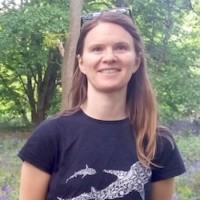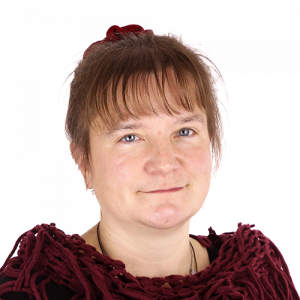
Submit here | Deadline: 28 February 2023
The prize for the Early Professional Award will be a piece of ornithology-themed artwork by an establishing/amateur artist, selected via an open competition.
We are delighted to invite submissions from early career and non-professional artists. To qualify for the competition, you should:
- Be within 10 years of your last art degree (early career) and/or your artwork should not be your primary source of income (non-professional).
- Be part of the ornithological community. This means being a member of any national science journal-publishing ornithological society. For low- or middle-income country nationals (OECD list), no society membership is required.
- Note: Current BOU committee members are welcome to enter the competition, although BOU Council members, as Trustees of the BOU, are not eligible to enter.
Your submission:
- Should be a visual artwork on the theme of ‘ibis’ (any species).
- May be in any medium, but should be easy and cheap to replicate and post.
- Should include up to five images (max 10 Mb) of your artwork (do not submit the original artwork).
- May include a proposal of the artwork to be completed, in which case detailed sketches/drawings of the proposed work should be included.
The winning submission will receive a £1,000 commission to produce 10 pieces of the artwork, to be used as the prize for the Early Professional Award.
Submit here | Deadline: 28 February 2023
Read more about the Early Professional Award
Art Competition Panel
Submissions will be judged by our Art Competition Panel.
Tom Cadwallender
As a Northumbrian living on the coast, Tom, who, whilst enjoying the scientifically driven birdwatching of collecting data, is passionately committed to the esoteric local patch birding around his home area of Alnmouth. The constantly changing light and seascapes of his local area is a daily inspiration which enhances the natural beauty of the great outdoors and has focused his appreciation of that wonderful band of people who can, so ably, capture that atmosphere.
Art in its many shapes and forms, but particularly bird and wildlife art, should be the gateway into to the fascinating world of natural history. With that philosophy Tom has long been a keen supporter, encourager and collector of the unsung local artists, of whom there are many.
Steve Dudley
Steve is the BOU’s former Chief Operations Officer and worked in and around bird conservation and ornithology since 1985 with the RSPB and BTO before running the BOU from 1997 until his retirement in July 2022.
Two of Steve’s real passions are birds and art. He was quite good at art at school and his successful O Level piece was of a Black-winged Stilt and he went on to study graphic design. He remembers his very first bird art buy, a Falcated Duck painting by Andrew Mackay (who later illustrated Steve’s Watching British Dragonflies book) at the BTO Annual Birdwatchers’ Weekend in 1987 and he has collected bird and wildlife art ever since. Among his favourite artists are Claire West, Stephanie Cunningham, Carry Akroyd, Kathryn Parsons, Harriet Mead and Andy Mackay (of course).
You can find Steve on Twitter @stevedudley_.
Becky Laidlaw
Becky works as a marine industries specialist advisor for Natural Resources Wales and on this panel is one of our two representatives from the BOU’s Awards Nominations Committee. Becky has previously worked on breeding waders, with roles at the University of East Anglia, University of Iceland and the RSPB. Her PhD explored habitat management options to minimise predation of breeding waders in lowland wet grasslands, and she carried this forward to further research on wader nest predation in England and in Iceland. This led to her organising a predator management workshop, which identified and prioritised the key knowledge gaps for predator studies in breeding waders. Becky is currently part of the Scientific Organising Committee for the 2022 BOU Annual Conference.
Follow Becky on Twitter @blaidlaw1

Darren Rees
Darren has been painting wildlife all his life and is one of the UK’s most highly respected nature artists, as well as an experienced naturalist and guide. His work has attracted many awards and honours including Artist in Residence in Antarctica with the Royal Navy from The Friends of the Scott Polar Research Institute. His first solo book Bird Impressions was also short-listed in the Natural History Book of the Year Award, and in 2021 he was named Wildlife Artist of the Year from the David Shepherd Wildlife Foundation and BBC Wildlife Magazine. He is a council member of the Society of Wildlife Artists and lives in the Forth Valley, Scotland.
Rachel Taylor
Rachel is an ornithologist both at work and play. She has a broad scientific role covering a wide range of ornithological issues, including researching survival in wading birds, supporting work for conservation policymakers, and a particular interest in using tracking technology to study birds of conservation concern – most recently understanding Curlew and Greenland White-fronted Goose spatial behaviour and how climate change may impact their resource use in winter across Wales and Ireland (www.echoesproj.eu).
When she isn’t flying a desk or a pair of wellies she creates beautiful stained glass bird sculptures (www.delweddyfran.com), some of which she has exhibited in the Society of Wildlife Artists Natural Eye exhibition at the Mall Galleries in London. She uses her art to tell ornithological stories and highlight conservation issues, and sometimes simply to express the beauty and wonder of birds beyond words.
Follow Rachel on Twitter @fidhw

Lucy Wright
Lucy is the Chair of the BOU’s Awards Nominations Committee and works as a Principal Conservation Scientist in the RSPB Centre for Conservation Science. Her research focuses on investigating the potential impacts of man-made developments (e.g. wind farms, tidal power, airports) on birds and providing scientific advice on balancing the need for renewables development with nature conservation.
Lucy is a keen bird ringer, mostly with the Wash Wader Research Group, and she is Chair of the BTO’s Ringing Committee and a member of the BTO Board. She believes that diversity, in all its forms, makes us stronger, and wants to help the BOU to continue its work to improve equality and diversity in ornithology.
Follow Lucy on Twitter @_LucyWright
Image credit: Red-naped Ibis (Pseudibis papillosa) | CHANDRANUJ CC BY SA 4.0 Wikimedia Commons


